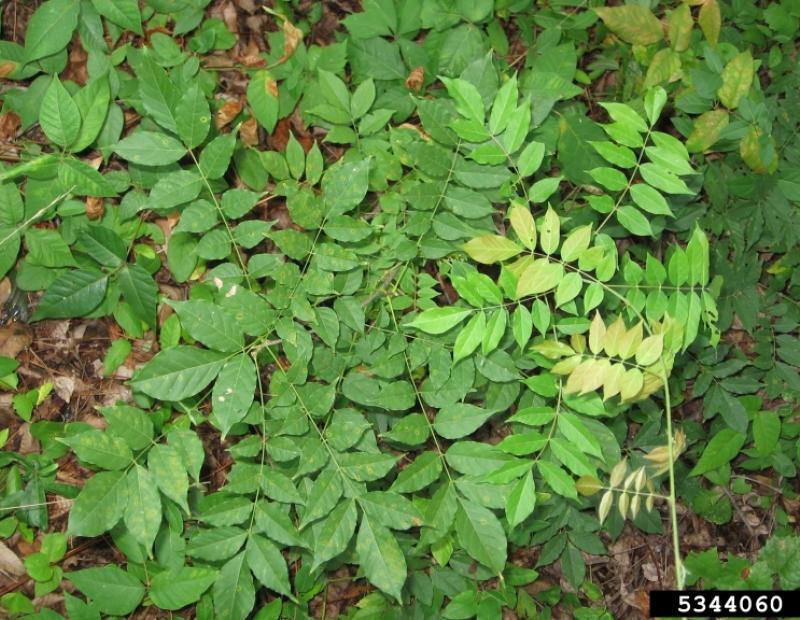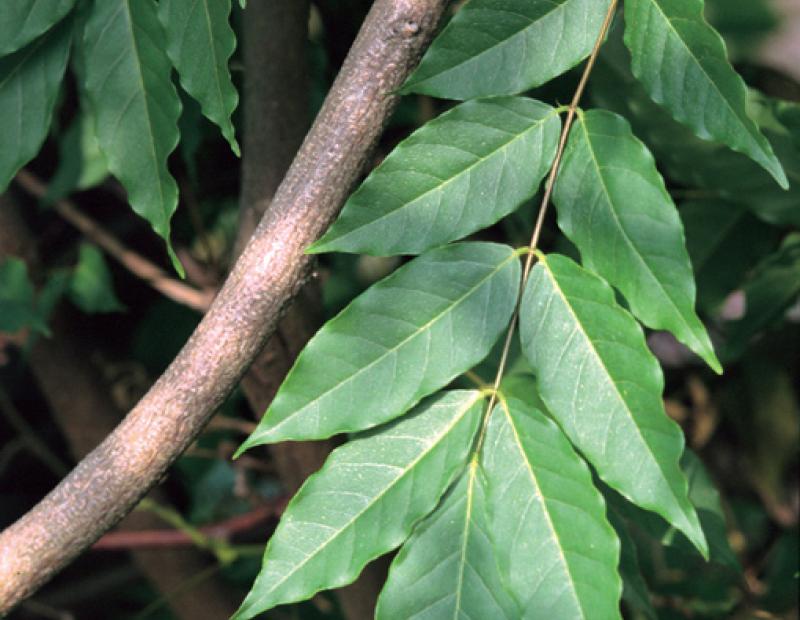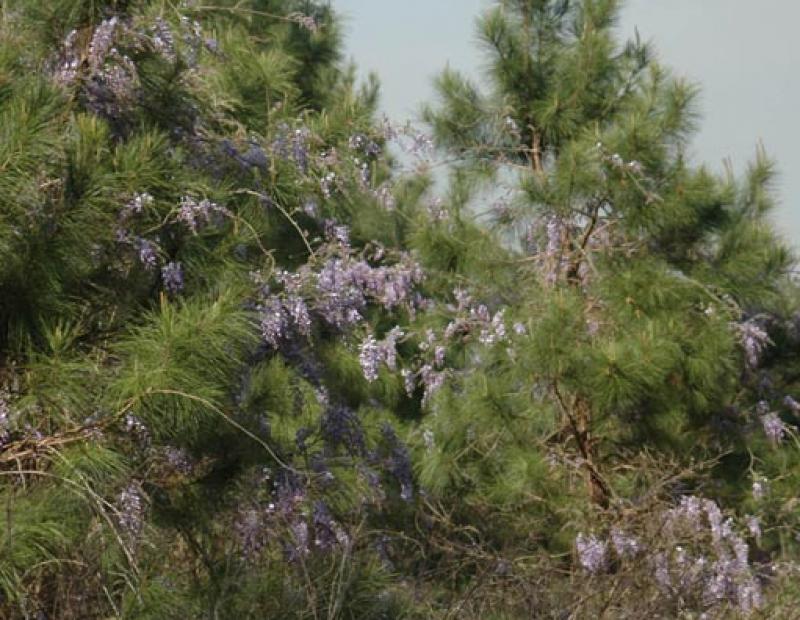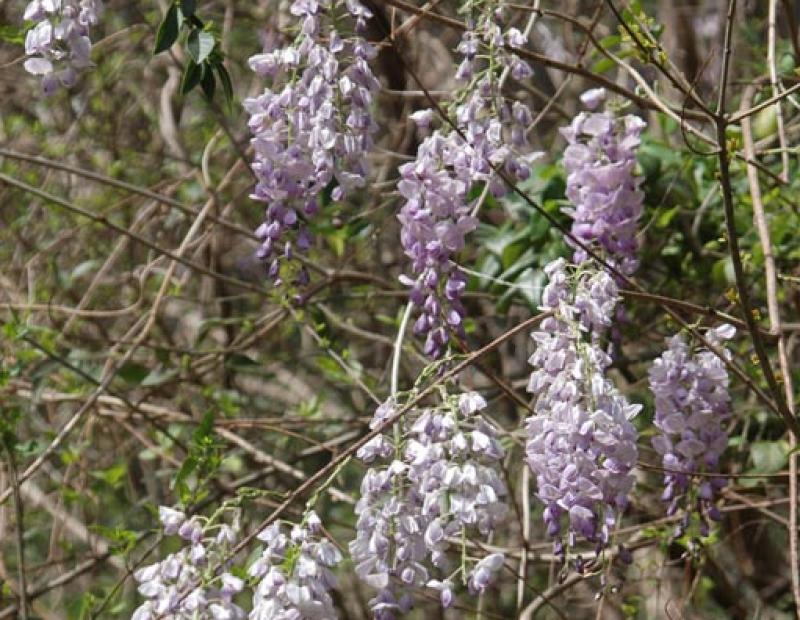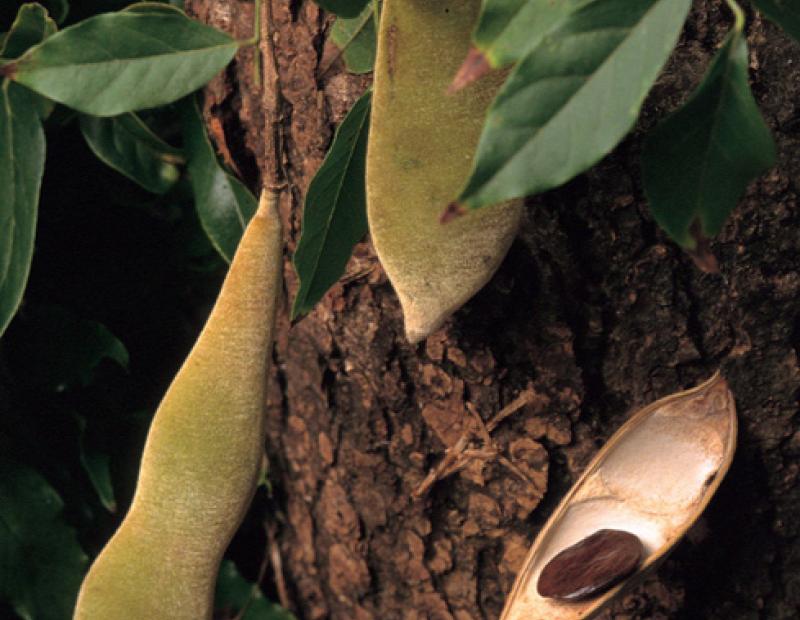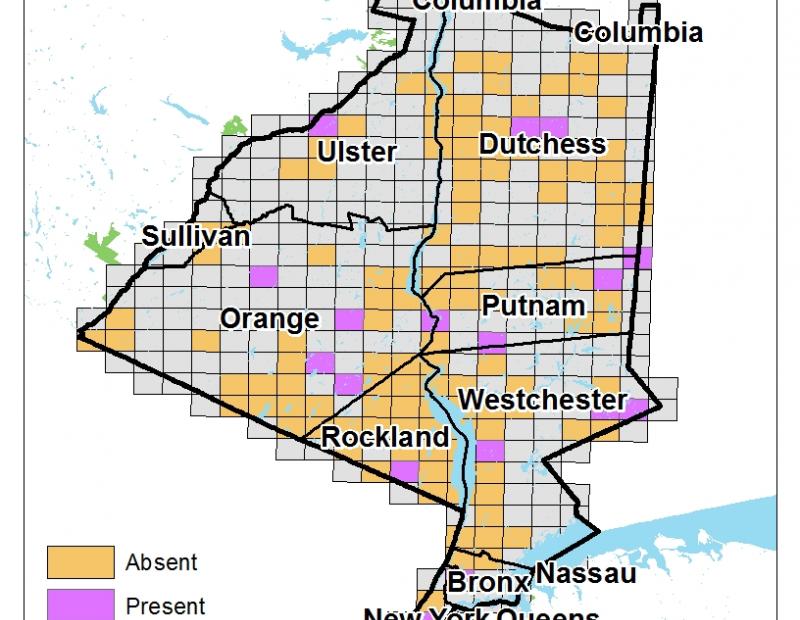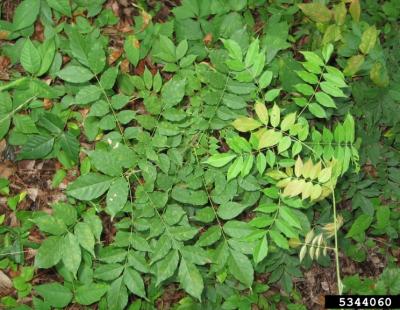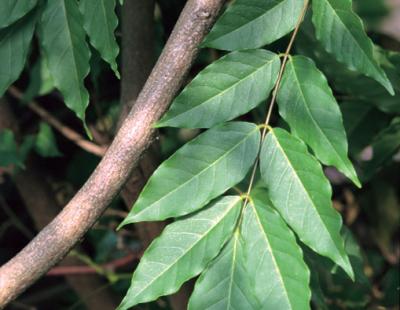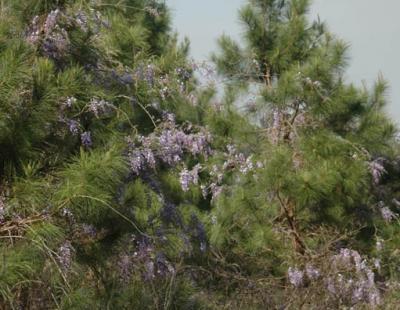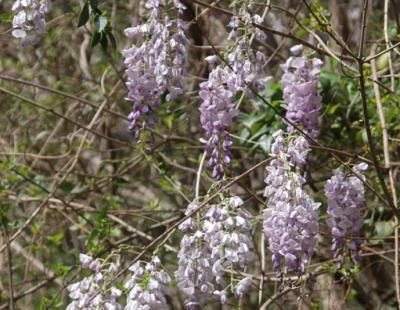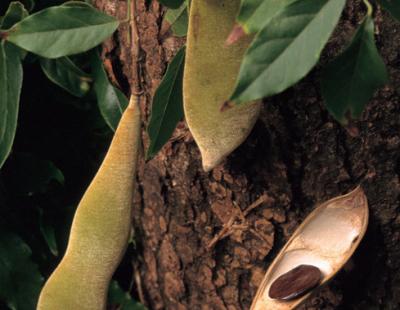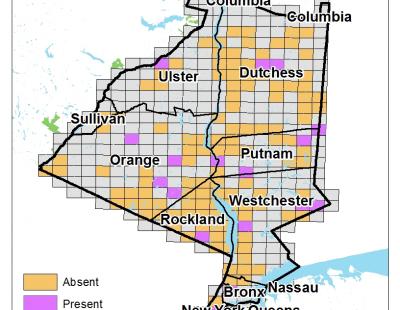Vertical Tabs
- Chinese wisteria is a member of the Legume family (Fabaceae).
- Chinese wisteria is a large, quick-growing woody vine prized in the horticultural trade for its’ attractive clusters of pendant purple flowers. (6)
Leaves
Leaves are alternate, compound, and contain 7-13 hairless leaflets. The species’ individual leaflets have wavy edges and long, pointed tips.
Flowers
Large clusters of pendant aromatic, purple flowers emerge in spring, usually in time with leaf-out. Clusters are large, generally 4-12 inches in length.
Fruit/Seed
Fruit is a velvety, elongate pod, 2-6 inches in length. Each pod contains 1-8 flat, round, brown seeds that are buoyant in water and are explosively propelled from the pod when ripe.
Chinese wisteria is a woody, perennial liana native to China. Vines spread by ground runners, covering the ground and twining around other vegetation to climb into the canopy. Dense foliage can smother, girdle and outcompete other vegetation, even killing sizeable trees. The resulting canopy gaps are excellent colonization sites for new invasive species.
Biological Control
No information available
Manual or Mechanical Control
Pulling / Digging Up: Pulling as a control method is possible only if plants are very young. Once wisteria becomes woody it is very difficult to remove by physical means. Any root fragments left in soil have the potential to re-sprout. (5)
Mowing: Chinese wisteria sprouts from cut stumps and low growing stolons may escape mower blades and continue to spread. If performing this method of management, cutting or mowing must be repeated every 2-3 weeks throughout the growing season. (3)
Girdling: Not applicable
Prescribed Fire: No information available
Prescribed Grazing: Wisteria is known to be toxic to certain grazing animals. (5)
Soil Tilling: Given Chinese wisterias ability to regenerate from root fragments, this method of control is inadvisable. (3)
Mulching: Not applicable
Solarization: Not applicable
Hot Foam Spray: No information available
Chemical Control
The pesticide application rates and usage herein are recommendations based on research and interviews with land managers. When considering the use of pesticides, it is your responsibility to fully understand the laws, regulations and best practices required to apply pesticides in a responsible manner. At times, the pest you seek to treat may not be on a pesticide label, requiring a 2ee exemption from NYSDEC. Always thoroughly read the label of any pesticide and consult the NYSDEC or a licensed pesticide applicator with questions.
Foliar Spray: High rates and repeat applications of foliar spray are necessary to come close to eradication of Chinese wisteria populations. Application is most effective in warmer temperatures and should be performed from June-September. A follow up application is advisable 3-6 weeks after initial treatment. This method of management should be performed only in areas where the much more effective cut-stump methods would be impractical. Always read and follow all instructions on the herbicide label. (3)
Cut Stump: Cut stump herbicide application is an effective way of managing Chinese wisteria, however, high rates of chemical application must be employed (25% solution of glyphosate or triclopyr in water). Furthermore, this method can only efficiently be used on larger vines with a greater surface area. Treatment should be performed during the latter half of the growing season and repeat treatment may be necessary to kill root sprouts. (4)
Basal Bark: Treat with a 15-30% solution of triclopyr in oil. (7)
Stem Injection: Not applicable
Pre-Emergent Spray: Not applicable
General management overview and recommendation
The most efficient method of management will depend upon the size and age of the target population. In most cases, a several pronged approach, marrying hand pulling of young plants with foliar spray and cut stump treatment of larger plants will be necessary.
Post treatment monitoring
Controlled populations should be revisited every 2-3 weeks after management to monitor for re-growth. Expect to retreat managed populations yearly if eventual eradication is the goal.
Disposal Methods
Stolons and root fragments are able to re-sprout: all material must be thoroughly dried, chipped, burned, or disposed of in a landfill.
REFERENCES
- https://plants.usda.gov/core/profile?symbol=wisi
- https://www.cabi.org/isc/datasheet/56852
- https://dnr.wi.gov/topic/Invasives/fact/Wisteria.html
- https://www.se-eppc.org/wildlandweeds/pdf/Winter2006-Miller-pp19-21.pdf
- https://www.fs.fed.us/database/feis/plants/vine/wisspp/all.html
- https://gobotany.newenglandwild.org/species/wisteria/sinensis/
- https://www.invasive.org/library/FLFSNoxWeeds/chinesewisteria.html

